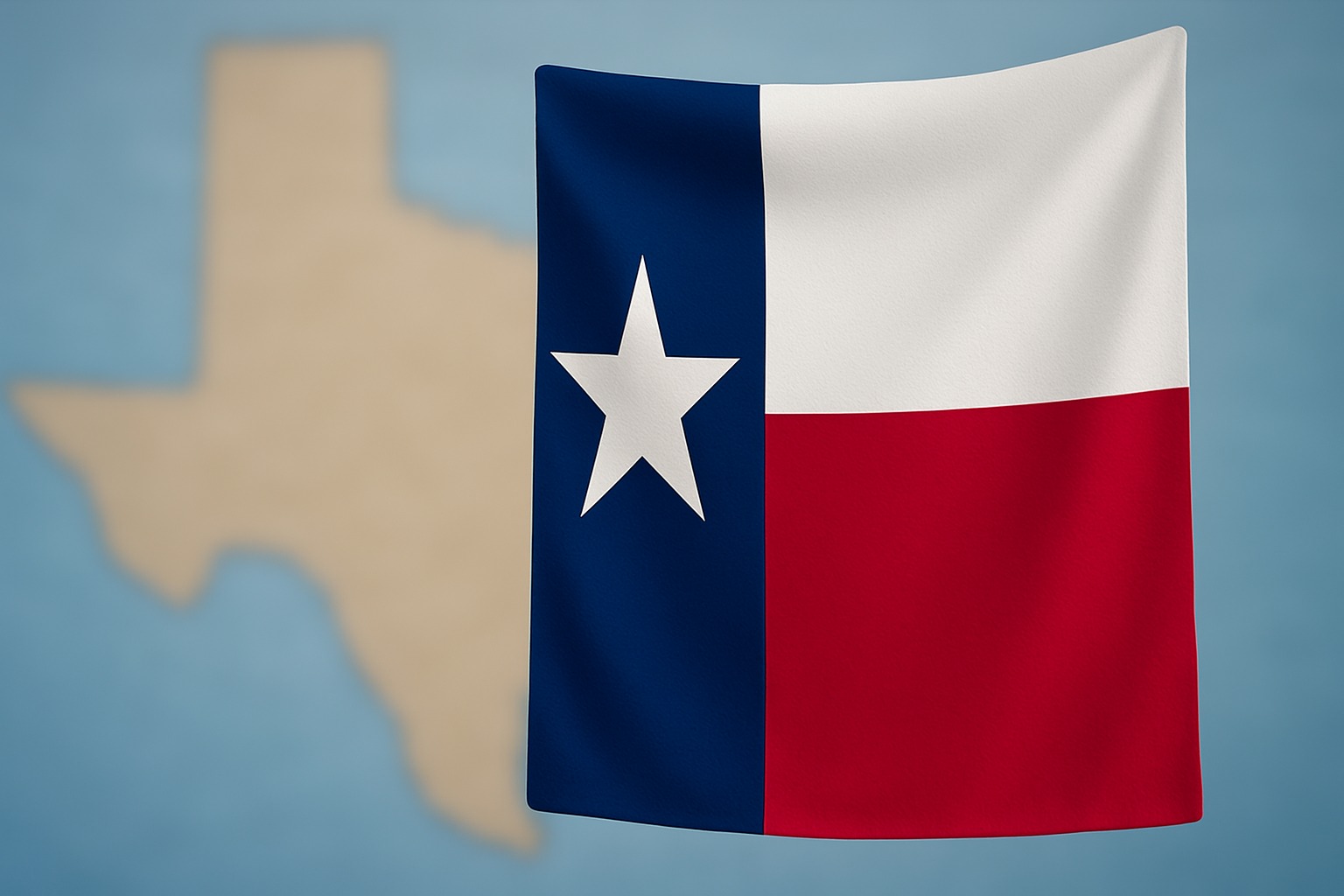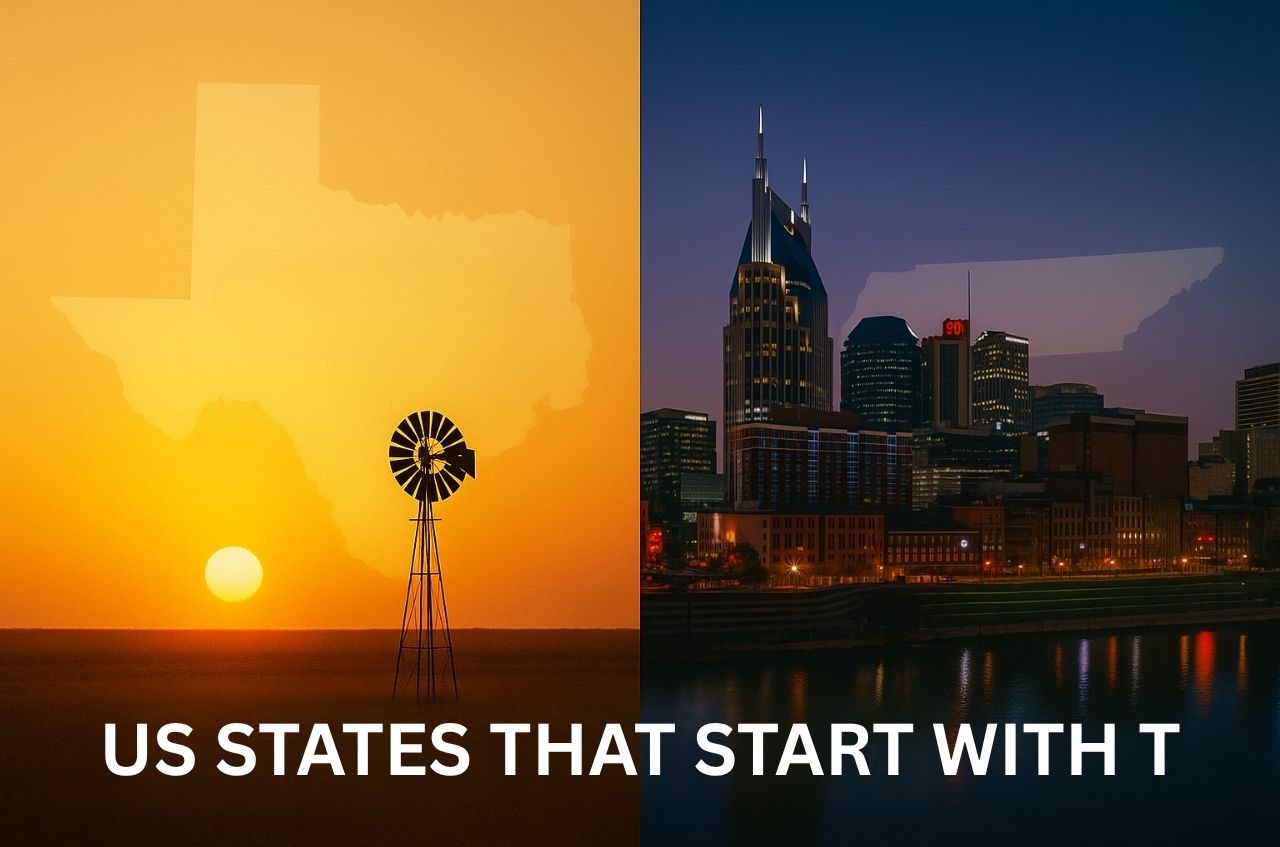Only a few letters are left before we end the whole series about US states starting with a specific letter. I figured out that this can be an interesting way to present different parts of the US and share some facts about history, geography, and many other details. The idea came from my love for pub quizzes. The previous piece was about the US states that start with S.
Today, we will share some facts about US states that start with T.
There are two of them: Texas and Tennessee.
Let’s see some interesting things that make those two states unique.
Texas

Texas stands unmatched in scale and contrast. Its land stretches across deserts, mountain ranges, dense forests, rivers, and the longest Gulf Coast shoreline in the country.
West Texas feels endless, the horizon pulled so far you start to doubt it ever ends.
Pine shadows fall thick in East Texas, and the ground smells like rain and sap.
Hill Country breaks the distance between them, rough stone cut with cold rivers and clear water that never stops moving.
There’s a reason Texans carry self-reliance like armor. The land never gave anything easily. Frontier life was harsh. Ranching demanded grit. Oil pulled men into rough work. Survival carved toughness into the culture.
History
Spanish missionaries came in the 1600s and laid the groundwork for what would become key outposts, with San Antonio rising in the 1700s as a center of control.
View this post on Instagram
By the early 1800s, settlers entered under Mexican rule. It didn’t take long before they demanded the right to govern themselves.
Names like Sam Houston and William Travis stepped forward. After a fast and final victory at San Jacinto in 1836, Texas claimed independence and stood as a republic. For nearly a decade, it stayed that way.
@imperial_history10 189 years ago on March 6th, 1836 the Battle of the Alamo fought between Mexican forces under General Santa Anna and Texan forces under Colonel James Bowie and Colonel William B. Travis ended #battleofthealamo #Alamo #history #ushistory #texashistory #texanhistory #texasrevolution #texanrevolution #alamobattle #mexicanhistory #mexicohistory #generalsantaana #santaanna #texashistoryfacts #unitedstateshistory ♬ original sound – Imperial History
In 1845, Texas joined the United States. That decision shaped future battles over land and autonomy.
Oil was discovered in the early 1900s. Small ranch towns grew into large industrial cities.
In the decades that followed, Texas expanded into other sectors. It became a major player in energy, technology, and international trade.
The same stands today, as Texas is among the richest states in the US. But you have to keep in mind that the cost of living is also among the highest, especially when it comes to healthcare.
The average salary is close to the average on the country level.
Geography
Texas is huge, about 268,600 square miles, and only Alaska covers more ground. The land doesn’t stay the same for long.
The Gulf Coast of Texas is flat, humid, and heavy with salt air. Marshes stretch behind long, sandy beaches that run for miles.
Inland, the land rises into the Interior Lowlands, where rich soil supports wide fields and grazing country.
North of that lies the Panhandle, a dry region defined by open plains and constant wind.
View this post on Instagram
Far West Texas stands in sharp contrast. The ground hardens into desert, the air turns thin, and the Basin and Range mountains cut the horizon clean.
Three rivers cut through all of it.
The Rio Grande draws the line between Texas and Mexico. The Red River runs across the north like a border of its own. The Brazos carves deep through the heart of the state.
Each region tells a separate story. The land moves from forest to desert in a single drive. Heat lingers near the border, cold air sweeps down from the plains, and storms cut through the center with no pattern.
South Texas feels almost tropical, the north freezes hard by December, and the middle stretches across an open sky where wind decides everything.
Surprising Facts About Texas
- The Texas State Capitol is taller than the U.S. Capitol in Washington, D.C.
- King Ranch covers more land than Rhode Island.
- Dr Pepper was first created in Waco in the 1880s.
- NASA’s Johnson Space Center in Houston directs U.S. space missions.
- “Houston” was the first word spoken on the Moon.
- Guadalupe Peak is the highest point in Texas at 8,751 feet.
- Texas leads the U.S. in wind energy production.
- The State Fair of Texas in Dallas runs for almost an entire month and draws millions.
Tennessee

Tennessee sits in the central United States and shares borders with eight states, a number matched only by Missouri.
Its history is marked by military service, earning it the nickname “Volunteer State” after generations of residents joined national conflicts without being drafted.
The state also played a major role in the development of American music, whiskey production, and agriculture.
History
Long before Tennessee became a state, the Cherokee and Chickasaw lived across its ridges, valleys, and river plains. They built societies rooted in the land. That ended when settlers moved in during the 1700s and started building forts.
In 1796, Tennessee entered the Union as the sixteenth state. Andrew Jackson made his name here. His rise started on Tennessee soil.
The Civil War split the state. Western counties backed the Confederacy. The eastern mountains stayed with the Union. It was not just a political divide. It was neighbor against neighbor.
After the war, recovery came slowly. People returned to farming and cutting timber because there were no other options. It was hard living. Over time, the industry moved in. Cities like Chattanooga and Knoxville began shifting from rural trade centers into industrial hubs.
In the 1900s, the Tennessee Valley Authority changed the direction of the state.
It brought power to areas that had never seen electricity, created jobs during the Depression, and controlled floods that once wiped out entire towns.
Music also had a huge impact on the history of Tennessee. Nashville turned into the center of country music through steady work and real talent. Memphis gave the world blues, soul, and rock and roll.
Sun Studio and Stax Records are some of the most popular names from this state.
Geography
Tennessee runs about 440 miles from east to west. In the east, the Great Smoky Mountains rise with peaks reaching over 6,000 feet.
The land drops into rolling farmland through the middle of the state, then climbs again across the Cumberland Plateau. Toward the western edge, the terrain flattens as it approaches the Mississippi River.
Two major rivers shape Tennessee. The Tennessee River cuts across deep valleys and curves through the heart of the state.
View this post on Instagram
The Mississippi runs along the western border, wide and slow, pulling the land toward the Delta.
The state has a humid climate with hot summers, cold winters, and powerful spring storms. Forests cover over half the land. Black bears roam the mountains. Deer move through the lowlands. Hundreds of bird species fill the air across every region.
Surprising Facts About Tennessee You Might Didn’t Know
- The Great Smoky Mountains National Park is the most visited national park in the United States.
- Elvis Presley recorded more than 200 songs at Sun Studio in Memphis.
- The first bottled Coca-Cola came from a small shop in Chattanooga in 1899.
- Oak Ridge played a key role in the Manhattan Project during World War II.
- The Grand Ole Opry in Nashville is the longest-running radio show in history.
- Graceland remains one of the most visited private homes in America.
- Tennessee whiskey must be filtered through charcoal before aging, known as the Lincoln County Process.
- Bristol shares credit with Memphis and Nashville as the birthplace of country music.
View this post on Instagram
Last Words
Texas holds more than space on a map. The land runs so far in every direction that it wears people down and shapes them at the same time. Out there, you learn fast that strength doesn’t come from talk. It comes from showing up, staying in it, and doing the work.
The wind cuts sharply, the dust sticks to everything, and the sound of life never really stops. That’s the rhythm, and it’s always been there.
Tennessee moves at a different pace. The land rises and drops like it’s keeping time.
There’s pride in the air, but there’s sorrow too, and neither one cancels the other out. Music came out of that mix. So did stories, and people carried both because they had to.


